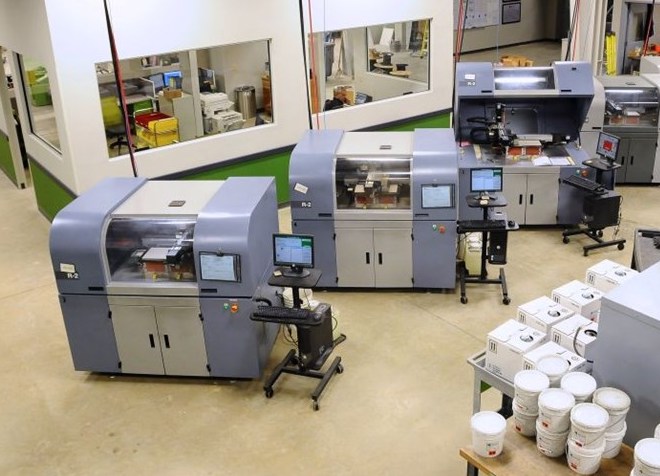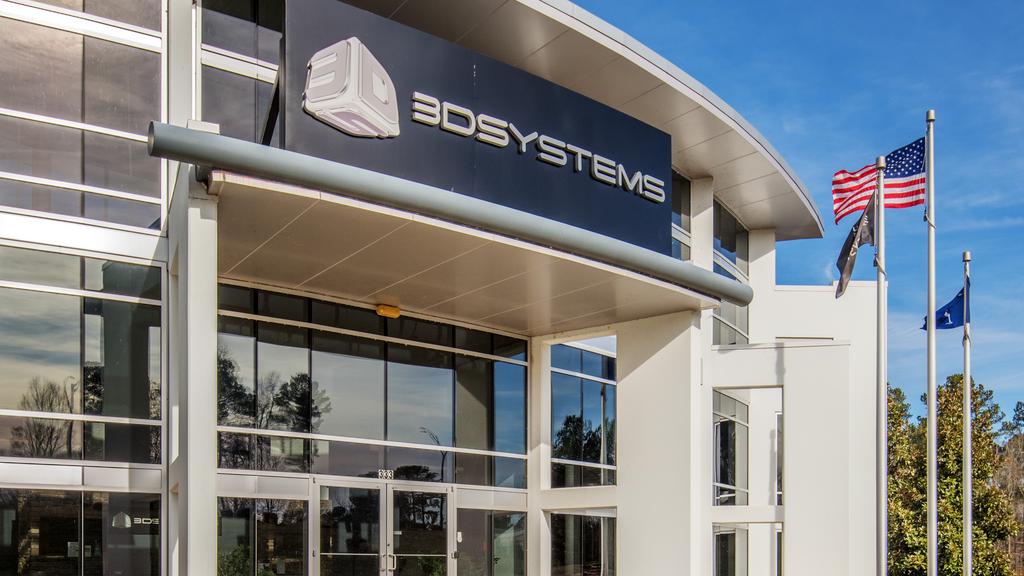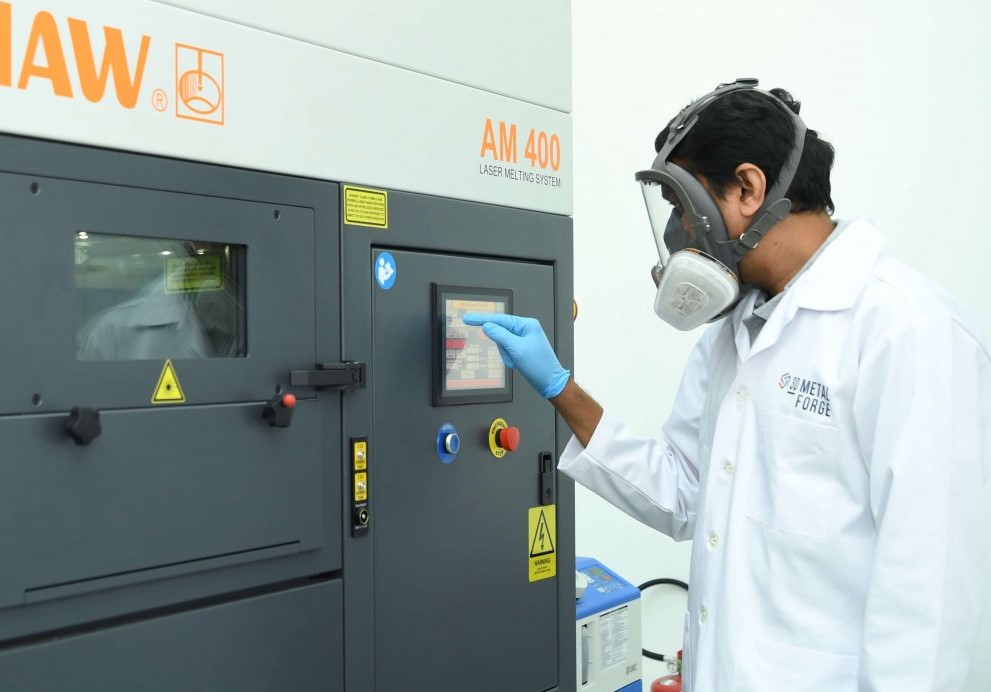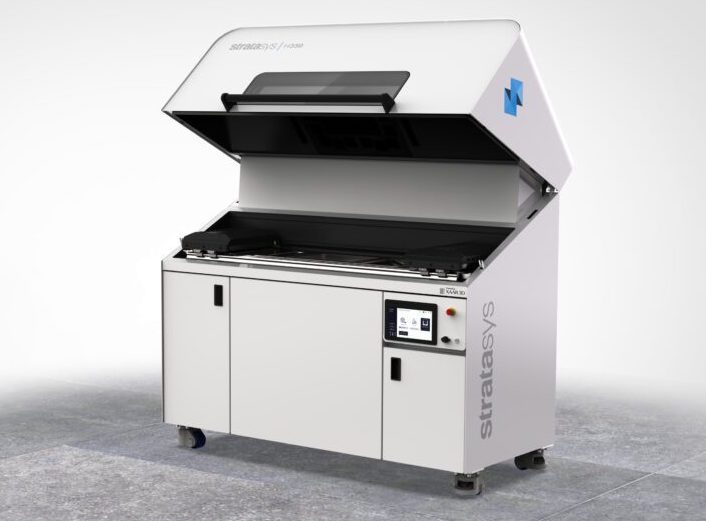Click to see all articles in our 2021 3D Printing Industry Review of the Year series.
March was another busy business month for 3D printing, with the industry’s IPO trend continuing apace and some of its biggest firms beginning to report financial recoveries, while those using the technology in the clinical and construction sectors also harnessed rising client interest, to turn R&D projects into commercial ventures.
Read on for March’s headline news from the likes of SLM Solutions, Velo3D, ExOne, Stratasys, Rocket Lab, ICON, CELLINK, CollPlant, 3D Systems, Mighty Buildings, ROKIT Healthcare and more.

Green shoots of recovery?
Although the pandemic continued to force many 3D printing adopters to tighten their spending during March 2021, there were early signs that this was starting to ease. In the 26th annual Wohlers Report, for instance, it was found that the sector had actually grown by 7.5% to nearly $12.8 billion from 2019 to 2020, despite COVID-19’s impact on the equipment sales of more established manufacturers.
This revenue recovery was also reflected in the financials of many leading 3D printing firms, as they began to publish their Q4 2020 results during the month. With annual growth of 11% for FY 2020, ExOne was one such manufacturer, and the company teamed its rosy figures with the announcement that it had achieved a breakthrough with Ford that month, in the creation of lightweight aluminum parts.
“Developing a fast, affordable, and easy way to 3D print aluminum with traditional material properties is a critical step toward light-weighting,” John Hartner, CEO of ExOne explained at the time. “Our world-class engineers and scientists are focused on solving the toughest problems with 3D printing technology, and this achievement is a real win for all of us.”

Having been forced into a strategic refocus by the impact of COVID-19 in Q2 2020, 3D Systems also reached a significant milestone in Q4 2020, by reporting its first revenue rise since 2018. Following its restructuring, the firm sought to drive greater value from its industrial and healthcare arms, and this strategy proved wise, with its income rising 8% in Q1 financial forecasts later in the year.
Likewise, metal 3D printer manufacturer SLM Solutions’s 26% increase in income over the course of FY 2020, provided it with reason for optimism heading into the new financial year. According to the firm’s CEO Sam O’Leary, it not only surpassed its previously-stated annual growth guidance during Q4 2020, but managed to gain significant traction with its newly-launched NXG XII 600 3D printer.
“Despite the difficult COVID-19-related business environment, we made tremendous progress in innovation and with key customers, adopting our technology on a larger scale,” O’Leary said back in March. “We launched our industry-defining new machine platform, the NXG XII 600, in November 2020, [and the] initial customer feedback we received has been overwhelming.”

3D printing’s IPO trend ramps up
In tandem with 3D printing’s recovering profitability, investor interest also grew across the industry during early-2021, with many firms seeking to capitalize on this trend by going public for the first time. During March, service bureau 3D Metalforge conducted its IPO to become listed on the Australian Securities Exchange, in a deal that saw it raise (AUD) $10 million towards its U.S. and Australian expansion.
Similarly, in the medical sector, reports began to emerge that 3D bioprinter manufacturer ROKIT Healthcare was preparing an IPO as well. At the time, it was thought that the move could help boost the company’s international brand exposure, while attracting investment to fund the continued development of its proprietary 4D bioprinting technologies.
By contrast, Velo3D and Rocket Lab also confirmed their intention to go public in March, but chose to do so by merging with a Special Purpose Acquisition Company (SPAC) rather than via conventional IPOs. While Rocket Lab raised over $750 million in funding from its deal, demand for Velo3D shares fell short of expectations, as its move generated $274 million, well short of its initial $500 million target.
Despite this, the firm’s Founder and CEO Benny Buller said after its IPO that he was “proud such visionary partners continued to trust Velo3D to build products through methods that were previously impossible,” and “with [SPAC partner] JAWS Spitfire’s long-term partnership, he expected the firm to extend the reach of its technology.”

Bioprinting investment booms
Elsewhere, 3D bioprinting technologies also benefited from a stellar month of investment, with the likes of early market leader CELLINK seeking to build on their portfolios. In order to expand on its in-vitro cell culturing expertise, the company bought the MatTek Corporation for $68 million, in a move that it was anticipated, could lead to the development of novel animal cruelty-free cellular testing models.
Over in Israel, CollPlant revealed that it too was reaping the benefits of increased interest in 3D bioprinting, in the form of a contract worth up to $103 million from Allergan Aesthetics. As part of the agreement, the Abbvie subsidiary gained the right to use CollPlant’s artificial collagen protein as a basis for developing dermal and soft tissue fillers, as well as for two further potential products in future.
On a more experimental level, 3D bioprinting also came on leaps and bounds over the course of 2021, and March saw one of the year’s standout research projects emerge at the Munich University of Applied Sciences. By firing an ultrashort Near Infrared (NIR) laser into a hydrogel just underneath a layer of cells, the team there found they were able to create single-cell resolution clusters with 99% viability.
With further R&D, the Germany-based scientists said it could be possible to combine their process with two‐photon stereolithography (2PP), to enable the creation of organ-on-a-chip devices or even functional human tissue substitutes.
AM Ventures’ €100M shot-in-the-arm
While the industry’s heavy hitters were getting back on their feet, AM Ventures also did its bit to help boost innovation at the other end of the 3D printing industry, by unveiling a €100 million start-up fund. Backed by the firm’s majority shareholders and EOS owners the Langer family, as well as serial investor KGAL, the pot will be used to support the growth of the sector’s newest, brightest firms from 2022.
“After six years of successfully investing in AM-based start-up companies, we decided to jointly take our business to the next level,” said the fund’s Founding Partner Dr. Hans Langer. “This step is a massive opportunity for all AM start-ups around the world, and will help to further accelerate the adoption of additive manufacturing.”

Stratasys unveils ‘SAF’ technology
In terms of tech innovations, Stratasys’ introduction of its Selective Absorption Fusion (SAF) process and H Series Production Platform was one of the highlights of the month. Developed initially by inkjet specialist Xaar 3D, the novel approach to binder jetting is said to yield consistent-quality parts at extremely high throughputs, especially when deployed within tooling applications.
Following the roll-out of its first SAF-powered platform, the H350 3D printer, Stratasys went on to take full control of Xaar 3D, having previously held a 45% stake in the firm. In doing so, Stratasys effectively acquired exclusive rights to the technology, and secured the future of its H Series systems, which are now installed at beta sites and are expected to launch commercially in the spring of 2022.
The firm’s CEO Yoav Zeif said at the time he was “excited to welcome the outstanding team of innovators from Xaar 3D to the Stratasys family,” and that customers were already telling him how SAF technology’s “consistent performance at higher volumes was helping them grow their businesses and provide them a significant competitive advantage.”
Concrete AM commercializes
While 3D printing has been deployed in experimental construction applications for some time now, March also saw the technology’s leading advocates set out to address the commercial market for the first time. During the month, Texan firm ICON made the bold decision to list its first US 3D printed homes, built as part of ‘East 17th Street,’ on the housing market there, with prices said to start at $450,000.
Not long afterwards, Mighty Buildings followed suit, by unveiling plans to 3D print fifteen eco-friendly homes and market them for prices ranging from $595,000 for single houses, to $950,000 for dual properties. Designed to be powered entirely by solar energy, each home in the development was expected to feature textured exterior stone walls, floor-to-ceiling windows and 1,450 sq. feet of living space.
“We are thrilled to launch this first development of 3D printed sustainable homes,” Mighty Buildings’ COO Alexey Dubov said of the development. “This will be the first on-the-ground actualization of our vision for the future of housing – able to be deployed rapidly, affordably, sustainably, and able to augment surrounding communities with a positive dynamic.”

A right of repair revolution?
Last but not least, a significant change in EU right to repair law happened in March, that saw the manufacturers of white goods become legally required to make product spares available to consumers for up to ten years. Although the reforms didn’t affect all domestic appliances, and phones and laptops were noticeably excluded from the changes, many in 3D printing saw it as an opportunity for inventory digitization.
EOS Additive Manufacturing Consultant Nicolas Dill told 3D Printing Industry the changes would “drive the demand for 3D printed spare parts,” while also forecasting that “B2C service platforms will emerge, granting the consumer a ‘right to download and produce’ a certain file for a small fee.”
Spare Parts 3D’s VP of Sales Christian Darquier agreed, saying: “This is very positive; home appliances companies now need to adopt a more systematic approach to really harness the value of additive manufacturing and look at AM as a systematic option for spare parts. The technical AM solutions offered by the industry at large can address most, if not all, constraints of home appliance parts.”
To stay up to date with the latest 3D printing news, don’t forget to subscribe to the 3D Printing Industry newsletter or follow us on Twitter or liking our page on Facebook.
For a deeper dive into additive manufacturing, you can now subscribe to our Youtube channel, featuring discussion, debriefs, and shots of 3D printing in-action.
Are you looking for a job in the additive manufacturing industry? Visit 3D Printing Jobs for a selection of roles in the industry.
Featured image shows a line of ExOne 3D printers installed by one of its clients in North America. Photo via ExOne.


